 | |||
| The Nostalgia Column | |
| Looking back at the history of the Austrian GP | by Marcel Schot, The Netherlands; images provided by Rainer Nyberg |
|
After the French and British Grands Prix, which have been on the calendar for almost every year, it's now time for the Austrian Grand Prix.
The first race didn't see a sequel until much later. Only in 1970 Austria got its second Grand Prix. This time the Oesterreichring near Zeltweg was the venue. Moreover, Jochen Rindt was the big favourite, having won the previous four races in the season and entering the race with a 20-point lead in the championship. Rindt qualified on pole, but his luck ran out just then. He abandoned the race after just 21 of the 60 laps with engine problems. It would also be the last time he drove a race: Rindt was killed 3 weeks later in qualifying for the Italian Grand Prix.
The following year a great battle between Emerson Fittipaldi and Denny Hulme unfolded, with Fittipaldi taking the win just 1.18 seconds ahead. In 1973 Ronnie Peterson took the first of his two victories. With those two wins, Peterson is one of only three drivers to ever win the Austrian Grand Prix more than once (Alain Prost and Alan Jones are the other two). The 1975 Grand Prix was yet another eventful race. Mark Donohue crashed during warm-up due to a blown tyre. The crash didn't appear to be very bad, but Donohue died a few days later in hospital. Thus far he remains the only driver who died during the Austrian Grand Prix. When the race started, the rain poured down. After 29 laps the race was stopped, because the rain completely flooded the track. Vittorio Brambilla became the winner while losing control of his car and spinning off the track when crossing the finish line. Half points were awarded, leaving Niki Lauda 0.5 points short of clinching his first world title on his home track.
In 1978 Ronnie Peterson managed to take his second win in Austria in style: with a pole position and fastest lap he became the second to score a hat trick and the first to win the race twice. Alan Jones was the second driver to have won twice at Austria - in 1979 and 1977. 1980 became one of the closest finishes in history: at the chequered flag only 0.82 seconds separated Alan Jones of his 3rd win, while Jean-Pierre Jabouille kept his Renault just in front. Two years later it got even closer: Elio De Angelis and Keke Rosberg had a mere 0.125 seconds between them with Elio snatched his first F1 win.
1986 and 1987 appeared to be key-factors in the demise of the Austrian Grand Prix. 1986 was the first year Formula One travelled to Eastern Europe, to drive a race on the safe and slow Hungaroring. In the next year the Oesterreichring was packed with incidents. The race needed three starts and even though nobody was injured, it was clear the track has become too dangerous and the FIA decided to go with Hungary instead of Austria. It was not only dangerous to drivers though. Stefan Johansson had a very scary moment when going uphill after the Texaco chicane (now known as Niki Lauda Kurve) where he met a roebuck, standing on the road. Johansson wasn't able to avoid the stunned animal and crashed right into it.
Only one driver who had driven the old track a decade ago, also drove the renewed one last year - Austrian Gerhard Berger. It was also where he announced his retirement from racing, putting an end to a beautiful career that started 13 years earlier, on that same track. In one of the biggest surprises of the year, Jarno Trulli put himself 3rd on the grid and took the lead at the first lap and kept it for 36 laps. Unfortunately, though, the young Italian had to end his race on the 59th lap, with an engine failure. Jacques Villeneuve then went on to take his sixth win of the season, on his way to the championship.
Last year McLaren dominated the race, making it a one-two, with Michael Schumacher 3rd in his Ferrari as much as 39 seconds behind winner Mika Hakkinen. The race started with Giancarlo Fisichella (Benetton) surprisingly on pole position. Not uncommon in Austria, the start was a complete mess. Olivier Panis' Prost didn't move from his spot on the grid though luckily everyone managed to get around the car. In the first corner Mika Salo (Arrows) and David Coulthard touched and spun, when Coulthard desperately tried to move his McLaren up the field after qualifying a disappointing 14th. The incidents caused the safety car to come out for two laps, after which David Coulthard was able to continue his impressive racing from 14th to 2nd. After 17 laps Michael Schumacher had to make a similar comeback after driving off his wing in the final corner, dropping him back from 3rd to 16th.
The Osterreichring was 5.94 km in length, with fast, sweeping bends. This was the fastest Grand Prix circuit of 1987 when Nelson Piquet set pole position at 256.6 kmph. The A-1 Ring was shortened to 4.297 km and now consists of three straights ending with slow corners and a tight infield section. Jacques Villeneuve's 1997 pole position was 221.1 kmph.
The Hella-Licht Schikane, where Mark Donohue sustained fatal injuries, was replaced by the slower Castrol Kurve. The Glatz Kurve was bypassed and the tight Remus Kurve was created to replace it. The 180° Bosch Kurve, which had no run-off area, was replaced by the much tighter Gosser Kurve. The Texaco Schikane was reprofiled to create the Niki Lauda and Gerhard Berger Kurves. The Rindt Kurve was broken into two corners, the Jochen Rindt Kurve and the A-1 Kurve, where Michael Schumacher crashed in last year's race. |
| 1998 Race Results | ||||
| Mika Hakkinen | McLaren-Mercedes | 1h 30:44.086 s | ||
| David Coulthard | McLaren-Mercedes | + 5.289s | ||
| Michael Schumacher | Ferrari | + 39.092s | ||
| Eddie Irvine | Ferrari | + 43.976s | ||
| Ralf Schumacher | Jordan-Mugen Honda | + 50.654s | ||
| Jacques Villeneuve | Williams-Mecachrome | + 53.202s | ||
| Giancarlo Fisichella | Benetton-Playlife | 1:29.598s | ||
| David Coulthard | McLaren-Mercedes | 1:12.878s | ||
| Marcel Schot | © 1999 Kaizar.Com, Incorporated. |
| Send comments to: schot@atlasf1.com | Terms & Conditions |
Images are kindly provided by Rainer Nyberg | |
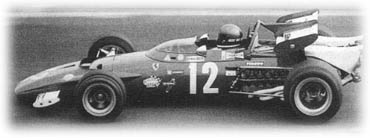
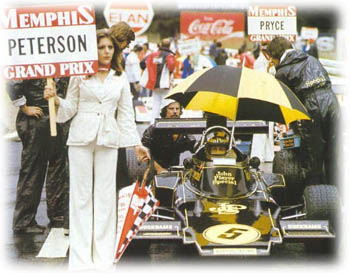
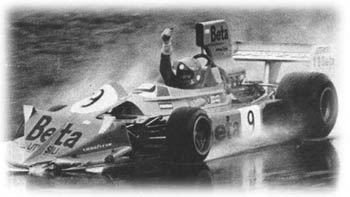
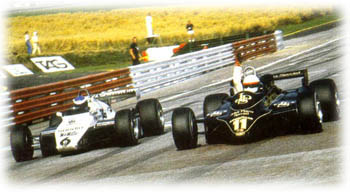
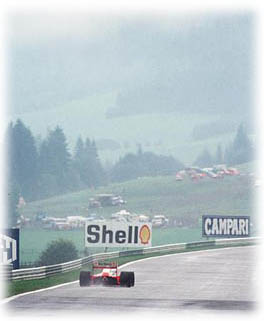
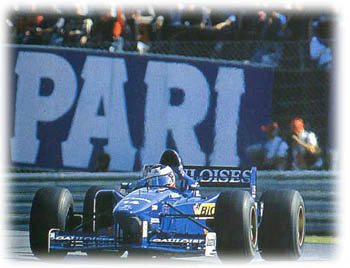
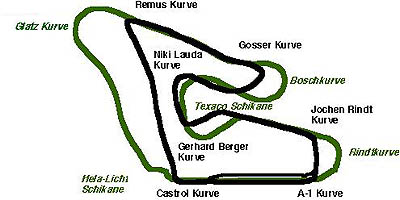 The Osterreichring consisted of the Hella-Licht Schikane, the Glatz Kurve, the Bosch Kurve, the Texaco Schikane and the Rindt Kurve.
The Osterreichring consisted of the Hella-Licht Schikane, the Glatz Kurve, the Bosch Kurve, the Texaco Schikane and the Rindt Kurve.